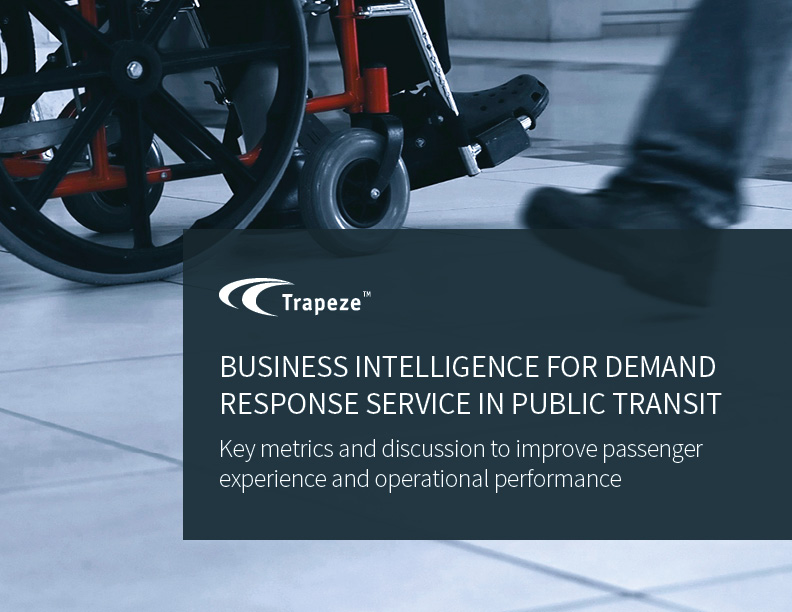Agencies have a lot of data, but they don’t always know what to do with it. It’s this inability to use historical, real-time or event-driven data to create proactive solutions that keeps many DR managers from meeting key service metrics, such as on time performance (OTP), passengers per hour (PPH) or complaints per 1,000 trips.
The first step is understanding how your DR service measures up and then use the data to glean business intelligence from across the entirety of the connected DR system.
In this eBook, you’ll learn the three demand response metrics that must be mastered; how to use software to manage on time performance in demand response; and how business intelligence is transforming DR.
Plus, you’ll learn how one of our clients, Dallas Area Rapid Transit (DART), increased their number of passengers from 1.31 to 1.6, and how they reduced complaints per thousand passengers from 20.8 to just 2.5, by understanding the data and creating proactive solutions to solve the challenges. You can see the same success too – get started with this eBook.
Despite these benefits, the U.S. transit industry has been slow to adopt contactless systems, largely because the myriad of players in the market (agencies, transit districts, card issuers and technology vendors) have not been able to agree on a standardized platform. Concerns over initial investment requirements have, erroneously, also slowed adoption.
What follows is an exploration of how North American transit agencies are approaching the opportunities and challenges of deploying contactless smart card systems and how passengers and agencies alike can benefit from adoption of the technology.
